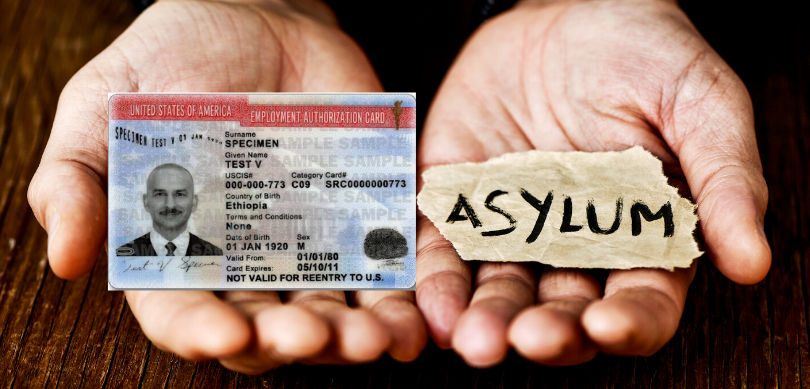Nueva tasa del programa de asilo del USCIS para las peticiones I-129 e I-140
Kyle Huffman • June 6, 2024
Click here to read this article in English
A partir del 1 de abril de 2024, USCIS ha aplicado un ajuste por inflación en las tasas de presentación de solicitudes de inmigración. Estos aumentos de tasas se aplican a la mayoría de los diferentes tipos de solicitudes, incluidas las peticiones basadas en la familia, de no inmigrante y de inmigrante. Como parte de estos aumentos de tasas, USCIS también ha instituido un nuevo programa diseñado para proporcionar financiación al Programa de Asilo de los Estados Unidos, con el fin de abordar mejor la enorme acumulación de solicitudes de asilo pendientes que actualmente están a la espera de ser adjudicadas. Lamentablemente, estos cambios han generado confusión entre los solicitantes sobre cuándo deben pagar la tasa del programa de asilo y cuándo pueden beneficiarse de una exención del 50% o de una exención total de la tasa.
La Tarifa del Programa de Asilo debe ser presentada por los empleadores en todas las peticiones I-129 y I-140 presentadas a partir del 1 de abril de 2024. La Tarifa del Programa de Asilo es de $600, sin embargo, se aplican ciertas exenciones.
Los pequeños empleadores, definidos como aquellos que tienen 25 o menos empleados en total, califican para una reducción de la Tasa del Programa de Asilo, pero aún se les requiere presentar una tasa reducida de $300. Los solicitantes individuales, o las auto-peticiones, como en el caso de una Exención de Interés Nacional EB-2, se consideran pequeños empleadores a efectos de la Tasa del Programa de Asilo y también están obligados a presentar la tasa reducida de 300 dólares.
Las organizaciones sin ánimo de lucro
están exentas de la tasa del Programa de Asilo y no están obligadas a presentar fondos adicionales con la tasa de presentación ordinaria I-129 o I-140. Además, las organizaciones sin ánimo de lucro pueden acogerse a una reducción del 50% de la tasa de presentación ordinaria en determinados tipos de solicitudes, con lo que la carga total de la tasa de presentación se reduce sustancialmente para las organizaciones sin ánimo de lucro.
Con estos cambios en el programa de tarifas de presentación de USCIS, se espera mejoras significativas en la eficiencia y el procesamiento de los solicitantes de asilo pendientes. Si usted o su organización peticionaria necesita cualquier tipo de asistencia en la preparación de una solicitud para un beneficio de inmigración, incluyendo asegurar el correcto cumplimiento de los nuevos requisitos de tasas, ¡nuestra oficina está lista y esperando para ayudar!
Este blog no pretende ser una asesoría legal y nada aquí debe interpretarse como el establecimiento de una relación abogado-cliente. Programe una consulta con un abogado de inmigración antes de actuar sobre cualquier información que aquí lea.
Kyle Huffman
Similar Posts

Under the new regulation, if a person filed or files Form I-589, Application for Asylum and for Withholding of Removal after October 1, 2024, and the application remains pending with USCIS for 365 days, the applicant must pay an Annual Asylum Fee (AAF) on the one-year anniversary of his or her filing date.

As of April 1, 2024, USCIS has instituted an inflation adjustment to immigration application filing fees . These fee increases apply to a majority of the different application types, including family-based, non-immigrant, and immigrant petitions. As a part of these fee increases, USCIS has also instituted a new program designed to provide funding to the United States’ Asylum Program, in order to better address the massive backlog of pending asylum claims currently waiting to be adjudicated. Unfortunately, these changes have led to confusion among petitioners for when they are required to pay the Asylum Program Fee, and when they may qualify for a 50% or complete exemption from the fee. The Asylum Program Fee is required to be submitted by employers in all I-129 and I-140 petitions filed on or after April 1, 2024. The Asylum Program Fee is $600, however, certain exemptions apply . Small employers , defined as having 25 or fewer total employees, qualify for a reduction of the Asylum Program Fee, but are still required to submit a reduced fee of $300. Individual petitioners, or self-petitions, such as in the case of an EB-2 National Interest Waiver, are considered small employers for the purpose of the Asylum Program Fee and are also required to submit the reduced $300 fee. Non-profit organizations are exempted from the Asylum Program fee and are not required to submit any additional funds with the ordinary I-129 or I-140 filing fee. In addition, non-profits qualify for a 50% reduction of the ordinary filing fee in certain types of applications, bringing the overall filing fee burden down substantially for non-profit organizations. With these changes to USCIS’ filing fee schedule, USCIS is hoping for significant improvements to efficiency and processing for pending asylum applicants. If you or your petitioning organization need any assistance in preparing an application for an immigration benefit, including ensuring proper compliance with the new fee requirements, our office is ready and waiting to help!

Once you have connected with a college program, have been admitted to the school, and deemed eligible to compete athletically, you will need to secure an F-1 student visa in order to actually attend your new college and begin your time as a student athlete. The first step in the visa process is to receive your Form I-2

For many talented athletes around the world, U.S. college athletics represent a remarkable opportunity to combine elite athletic competition with higher education. In sports such as basketball, soccer, track and field, and tennis, among others, hundreds of colleges and universities across the United States offer struct

Under the new regulation, if a person filed or files Form I-589, Application for Asylum and for Withholding of Removal after October 1, 2024, and the application remains pending with USCIS for 365 days, the applicant must pay an Annual Asylum Fee (AAF) on the one-year anniversary of his or her filing date.





